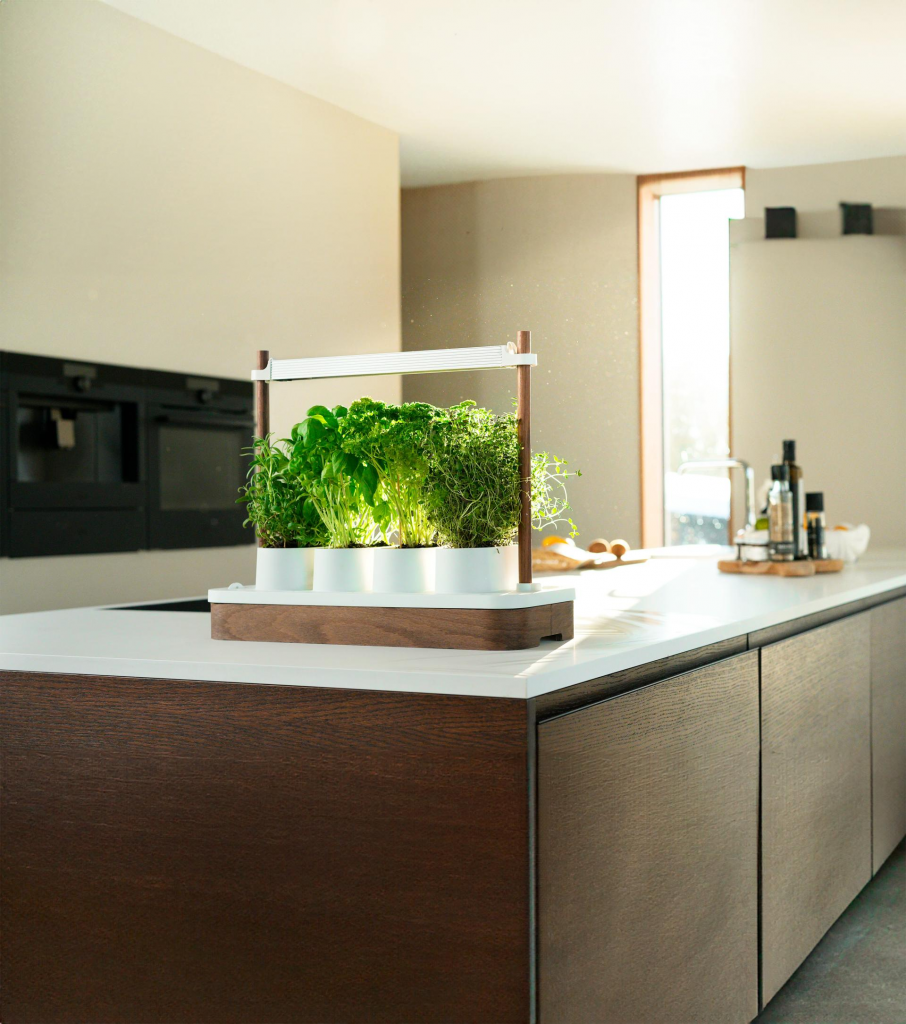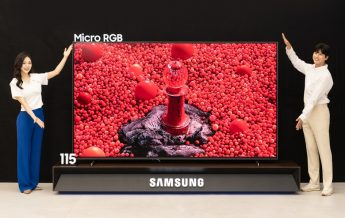
Auk Mini Review: The Smartest Way to Grow Green
Most of us love the idea of having fresh basil in our pasta or mint in our mojito, but keeping plants alive is another story. Between overwatering, underfeeding, and the occasional “oops, I forgot you existed” week, indoor gardening often ends in heartbreak and a wilted stem.
That’s where the Auk Mini comes in : a sleek, Scandinavian smart garden that promises to make growing your own herbs as easy as brewing your morning coffee.
I’ve spent the past six weeks testing it out, and spoiler alert: this is the first smart garden I’ve tried that actually feels designed for real people, the ones who live in flats, forget watering schedules, and still want a kitchen that looks like a Pinterest board.
A Smarter, Simpler Kind of Hydroponics

Most indoor garden systems come with one major catch: they lock you into buying proprietary pods or capsules. Think printer ink subscriptions, but for basil. Sure, it sounds convenient until you realise you’re spending a small fortune on refill packs, not to mention the plastic waste that piles up faster than your herb growth.
That’s what first caught my eye about the Auk Mini (pronounced “owk”). This Norwegian-designed hydroponic system ditches the pods entirely. You can use any seeds you want: basil, cilantro, parsley, thyme, or even the more adventurous picks like chili or tomato, all grown from plain old seeds you buy anywhere. The included coconut coir substrate (that’s the fibrous shell from coconuts) replaces messy soil and keeps the roots hydrated without any pumps or tubes.
It’s a refreshingly open approach in a category filled with gimmicks. And it works beautifully.
Scandinavian Design Meets Kitchen Counter
You know how some gadgets scream “tech toy” the moment you unbox them? The Auk Mini does the opposite. Its minimalist, warm design blends right into a stylish kitchen setup: all clean lines, soft wood finishes, and a white light bar that feels more like home decor than hardware.
You get to choose between oak or walnut finishes, paired with white or black pots that sit neatly atop a slim 3-litre water reservoir. Two wooden poles hold up a slim full-spectrum light bar that adjusts as your plants grow. It’s elegant, compact (about 17.5 x 8.5 x 14.5 inches), and feels more like a piece of Scandinavian furniture than a tech gadget.
In short: it looks expensive because it is. At $259, it’s not cheap, but it earns its place on your countertop.
Plug In, Pour Water, Plant Seeds, Done

Setup is delightfully idiot-proof. You fill the reservoir with water, slot in the pots with the coconut coir, add your seeds (Auk includes basil and parsley to start), give a few pumps of the included nutrients, and plug it in.
There’s no complicated app, no tubing, and no pump noise humming in the background. The LED light bar runs on a 17.5-hour cycle, mimicking a long Scandinavian summer day. Want your plants’ “sunrise” to start at 8 AM? Just hold the button underneath for five seconds at that time, and it remembers the setting.
The whole thing feels thoughtfully stripped-down: every unnecessary feature removed, leaving only what actually helps your plants grow. It’s the Marie Kondo of hydroponics.
Perfect for Flat Owners and Gardening Beginners
If you live in a small apartment or a home without outdoor space, the Auk Mini is basically your ticket to a tiny green paradise. It doesn’t need sunlight, it doesn’t make a mess, and it doesn’t smell like damp soil. You can place it in your kitchen, on your desk, or even in a hallway: anywhere there’s a power socket.
Within a week, I had basil shoots reaching for the light, cilantro sprouting confidently, and parsley quietly doing its thing. By week four, I was harvesting enough basil to make a full jar of pesto and clipping herbs almost daily.
Unlike smaller pod-based systems that grow one sad stalk at a time, the Auk gives you real yield. Enough to cook with, share, and still have your plants bounce back.
The Techy Bit (That’s Surprisingly Low-Tech)
What’s refreshing about the Auk Mini is how un-techy it feels for a smart garden. There’s no app, no camera, no water pump: just smart design doing its job quietly.
The coconut coir substrate naturally balances pH, meaning you don’t need to measure acidity or fuss with calibrations. The nutrient bottles tell you exactly how many “squirts” to use per refill, so there’s no overfeeding or mystery math.
Even the light modes are simple: tap once for normal herb growing, three times for “chili and tomato” mode, which increases brightness. Though, to be fair, taller plants like tomatoes will probably outgrow the 12-inch light bar long before they fruit, so herbs remain the ideal use case here.
Growth, Results, and a Little Bit of Chaos

Here’s the thing about growing plants: they’re alive, and they don’t always care about your design aesthetic. After about a month, my once-pristine Auk Mini turned into a mini jungle. The basil started brushing against the LED light bar, the parsley leaned dramatically over its neighbours, and the cilantro stretched itself thin trying to find more space.
It wasn’t “Instagram-pretty” anymore: but it was thriving. I was getting multiple harvests a week. My kitchen smelled like a Mediterranean garden, and I wasn’t throwing away wilted supermarket herbs anymore.
So yes, the Auk Mini might eventually look a bit wild, but that’s kind of the point. It’s a living, evolving piece of tech, and the payoff is delicious.
Mold, Maintenance, and Other Realities
With any hydroponic system that doesn’t circulate water, mold is a potential concern. During my six-week test, I kept an eye on the underside of the pots and found none, though it’s worth noting my flat stays cool (under 21°C). Warmer homes or direct sunlight might increase that risk, so placement matters.
Aside from occasionally topping up the water (every week or so) and trimming back growth, the Auk Mini requires almost no attention. It’s silent, spill-free, and doesn’t attract bugs. If you’ve ever killed a plant by forgetting it for a week: you’ll be fine here.
And if for some reason you’re not? Auk offers a 100-day money-back guarantee, which is rare in this space.
Why It’s a Game-Changer
What makes the Auk Mini stand out isn’t just its good looks, it’s the freedom it gives you. Other hydroponic systems tend to lock you into a brand ecosystem, turning your kitchen garden into a subscription model. Auk’s open design gives you control: use your own seeds, refill your own nutrients, experiment with varieties, and never feel like you’re “out of pods.”
It’s the kind of innovation that quietly disrupts an entire category, not through flashy AI integration or endless data tracking, but through thoughtful simplicity. It’s the smart garden that doesn’t need to prove it’s smart.
The Verdict

After six weeks of growing (and eating) from the Auk Mini, here’s my take: it’s not the cheapest, flashiest, or most feature-packed system out there. But it’s the most balanced, combining design, performance, and user-friendliness in a way few others do.
It’s ideal for:
- Apartment dwellers or anyone without outdoor space
- Beginners who want to grow herbs with zero guesswork
- People who value aesthetics as much as function
- Home cooks who love using fresh ingredients
It might not suit:
- Serious hydroponic growers chasing maximum yields
- People who want app-controlled automation
- Anyone expecting it to double as a tomato farm
At $259, it’s a premium investmen, but one that pays off every time you grab a handful of homegrown herbs instead of tossing another plastic packet in your trolley.
Final Thoughts
The Auk Mini is about making indoor gardening feel effortless, elegant, and genuinely joyful. It’s what happens when Scandinavian design meets sustainable living: a clean, quiet innovation that turns even the smallest flat into a little green oasis.
You’ll fall in love with it for its look, stay impressed by its results, and eventually forget it’s even “tech.” And that’s the beauty of it: the best innovations quietly make your life better.







